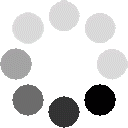Rights Contact Login For More Details
- Wiley
More About This Title Calcium Orthophosphate-Based Bioceramics andBiocomposites
- English
English
The result is a useful reference for researchers with an academic, medical or commercial background.
- English
English
- English
English
Preface IX
Part I Calcium Orthophosphates (CaPO4): Occurrence, Properties, and Biomimetics 1
1 Introduction 3
References 5
2 Geological and Biological Occurrences 7
References 11
3 The Members of CaPO4 Family 17
3.1 MCPM 18
3.2 MCPA (or MCP) 22
3.3 DCPD 22
3.4 DCPA (or DCP) 23
3.5 OCP 24
3.6 β-TCP 25
3.7 α-TCP 26
3.8 ACP 27
3.9 CDHA (or Ca-def HA, or CDHAp) 29
3.10 HA (or HAp, or OHAp) 31
3.11 FA (or FAp) 33
3.12 OA (or OAp, or OXA) 35
3.13 TTCP (or TetCP) 36
3.14 Biphasic, Triphasic, and Multiphasic CaPO4 Formulations 37
3.15 Ion-Substituted CaPO4 38
References 39
4 Biological Hard Tissues of CaPO4 59
4.1 Bone 61
4.2 Teeth 73
4.3 Antlers 80
References 83
5 Pathological Calcification of CaPO4 99
References 102
6 Biomimetic Crystallization of CaPO4 109
References 113
7 Conclusions and Outlook 121
References 123
Part II Calcium Orthophosphate Bioceramics in Medicine 125
8 Introduction 127
References 128
9 General Knowledge and Definitions 131
References 133
10 Bioceramics of CaPO4 135
10.1 History 135
10.2 Chemical Composition and Preparation 135
10.3 Forming and Shaping 137
10.4 Sintering and Firing 139
References 142
11 TheMajor Properties 159
11.1 Mechanical Properties 159
11.2 Electric/Dielectric and Piezoelectric Properties 162
11.3 Possible Transparency 163
11.4 Porosity 164
References 170
12 Biomedical Applications 189
12.1 Self-Setting (Self-Hardening) Formulations 196
12.2 Coatings, Films, and Layers 196
12.3 Functionally Graded Bioceramics 197
References 200
13 Biological Properties and In Vivo Behavior 205
13.1 Interactions with Surrounding Tissues and the Host Responses 205
13.2 Osteoinduction 207
13.3 Biodegradation 209
13.4 Bioactivity 211
13.5 Cellular Response 215
References 217
14 Nonbiomedical Applications of CaPO4 227
References 227
15 CaPO4 Bioceramics in Tissue Engineering 231
15.1 Tissue Engineering 231
15.2 Scaffolds and Their Properties 232
15.3 Bioceramic Scaffolds from CaPO4 235
15.4 A Clinical Experience 238
References 238
16 Conclusions and Outlook 253
References 255
Part III Biocomposites fromCalcium Orthophosphates 259
17 Introduction 261
Abbreviations 264
References 265
18 General Information and Knowledge 269
References 271
19 The Major Constituents of Biocomposites and Hybrid Biomaterials for Bone Grafting 275
19.1 CaPO4 275
19.2 Polymers 275
19.3 Inorganic Materials and Compounds 279
19.3.1 Metals 279
19.3.2 Glasses and Glass-Ceramics 279
19.3.3 Ceramics 280
19.3.4 Carbon 280
References 281
20 Biocomposites and Hybrid Biomaterials Based on CaPO4 287
20.1 Biocomposites with Polymers 287
20.1.1 Apatite-Based Formulations 292
20.1.2 TCP-Based Formulations 296
20.1.3 Formulations Based on Other Types of CaPO4 298
20.2 Self-Setting Formulations 299
20.3 Formulations Based on Nanodimensional CaPO4 and Nanodimensional Biocomposites 301
20.4 Biocomposites with Collagen 304
20.5 Formulations with Other Bioorganic Compounds and/or Biological Macromolecules 309
20.6 Injectable Bone Substitutes (IBSs) 312
20.7 Biocomposites with Glasses, Inorganic Compounds, Carbon, and Metals 313
20.8 Functionally Graded Formulations 318
20.9 Biosensors 321
References 322
21 Interaction among the Phases in CaPO4-Based Formulations 375
References 383
22 Bioactivity and Biodegradation of CaPO4-Based Formulations 391
References 393
23 Some Challenges and Critical Issues 395
References 396
24 Conclusions 399
References 400
Index 401

